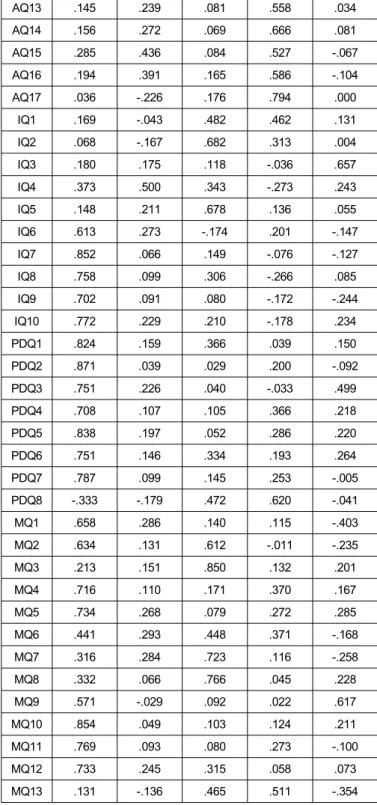Abstract
The objective of the study is to find out the faculty mem- bers’perspective of most and least preferred parameters affecting the quality of education in an affiliated undergraduate engineer- ing institution in Haryana, India. It is a descriptive research. The data has been collected with the help of Questionnaire Based Survey. The sample size for the study is 110. The respondents are the faculty members teaching B. Tech who were selected randomly from the above said geographical area. For data anal- ysis and conclusion of the results of the survey, statistical tool like factor analysis was performed in SPSS. The most preferred aspects of the institution by the faculty members are: a secured Wi-Fi facility is well channelized to provide easy access, library is well equipped, faculty can visit the library with ease whenever they find time, toilets for the faculty are hygienic and in ad- equate number, parking facility for the faculty vehicle is spa- cious, adequate Industry Institute Interaction for the faculty de- velopment etc. The least preferred aspects of the institution by the faculty members are: faculty / staff rooms are spacious, well furnished and adequate in number, and working relationships between the Head of Departments and their faculty members are synchronized.
Keywords: engineering, higher education, private technical, technical education, quality education
JEL Classification: I20, I23, I25
* Assistant Professor, Faculty of Engineering & Technology, Manav Rachna International University Faridabad, Haryana, India [H. No. 364, Sector- 15A, Faridabad, Haryana- 121007, India E-mail:
neerajnarwat@gmail.com]
1. Introduction
The foundation of present day Technical Education System in India was laid during 1840's with the establishment of technical institutions at Roorkee, Madras, Calcutta and Pune. All India Council for Technical Education was established in 1945 as an Advisory Body in all matters of Technical Education. Technical Education in India gained momentum after independence in 1947 when emphasis was laid by Government of India (GOI) and the States in their policies and plans for this purpose. Full policy support and substantial funds have been provided by GOI and the States to create one of the world’s largest systems of technical education. As a result of this, the country has wit- nessed enormous growth in technical education facilities during the past 50 years.
The Constitutional Amendment of 1976 places education, in- cluding Technical Education in the concurrent list. This calls for greater responsibility on part of both the States and the Centre for integrated development of technical education sub-sector.
They have to meet the challenge of heavy demand of pro- fessional courses in the institutions directly funded by them and also ensure quality education both in the Government funded and in the private self financing professional and technical edu- cational institutions growing at faster pace.
In 1987, the All India Council for Technical Education (AICTE) was vested with statutory powers through an Act of Parliament with a view to the proper planning and co-ordinate development of the Technical Education System throughout the country, the promotion of qualitative improvement of such educa- tion in relation to planned quantitative growth and the regulation and proper maintenance of norms and standards in the Technical Education System and for matters connected therewith.
Besides, the Central Government by an Act of Parliament in 1956 established the University Grants Commission to make provisions for the Co-ordination and determination of standards in Universities. The Bureau of Technical Education (BTE) in the Print ISSN: 2288-4637 / Online ISSN 2288-4645
doi: 10.13106/jafeb.2014.vol1.no3.37.
Most to Least Preferred Parameters Affecting the Quality of Education: Faculty Perspectives in India
4)
